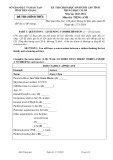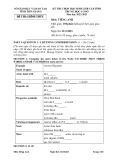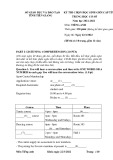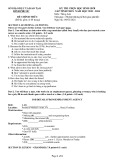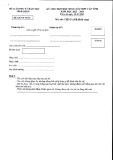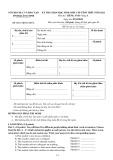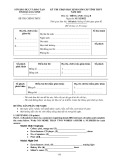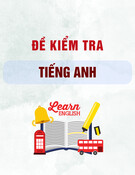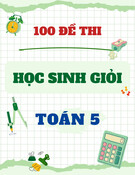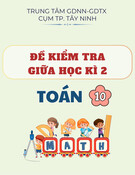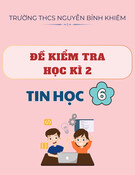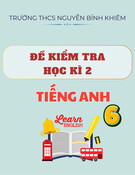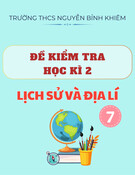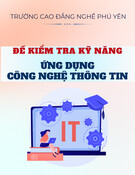
1 / 16
SỞ GIÁO DỤC VÀ ĐÀO TẠO TÂY NINH
KỲ THI CHỌN HỌC SINH GIỎI THPT CẤP TỈNH
NĂM HỌC 2024-2025
Ngày thi: 25 tháng 9 năm 2024
Môn thi: TIẾNG ANH (THI VIẾT)
Thời gian: 180 phút (không kể thời gian giao đề)
-----------------------------------------------------------------
ĐIỂM BÀI THI
HỌ TÊN VÀ CHỮ KÍ GIÁM KHẢO
MÃ PHÁCH
(Do HĐ chấm thi ghi)
Bằng số
Bằng chữ
GIÁM KHẢO 1
GIÁM KHẢO 2
ĐỀ CHÍNH THỨC
(Đề thi gồm có 16 trang, thí sinh làm bài trực tiếp vào đề thi này)
I. LISTENING (5.0 points)
Part 1: For questions 1-5, listen to a discussion about the popularity of crime fiction, and
decide whether each of the following statements is True (T), False (F), or Not Given (NG)
according to what you hear. Write T, F, or NG in the corresponding numbered boxes
provided.
1. The podcast focuses on discussing recent developments in crime fiction.
2. According to Victor, detective stories activate the brain’s survival system.
3. Caroline claims detective fiction requires less reading between the lines.
4. Creative workers relate more to non-conformist detectives than corporate workers.
5. Fictional detectives are popular because their personality traits are rarely encouraged in real
life, according to Victor.
Your answers:
1.
2.
3.
4.
5.
Part 2: For questions 6-10, listen to part of a TV program in which an economics professor
talks about credit card spending and answer the following questions. Write NO MORE
THAN TWO WORDS taken from the recording for each answer in the spaces provided.
6. What term describes the current state of society according to Malcolm?
_____________________________________________________________________________
7. What is the first factor contributing to the rise in credit card spending, according to Grey?
_____________________________________________________________________________
8. What types of interest rates are typically applied for late payments?
_____________________________________________________________________________
9. Which age group is targeted by credit card ads, according to Professor Grey?
_____________________________________________________________________________
10. What amount of debt do many university graduates carry, according to Charlotte?
_____________________________________________________________________________
Part 3: For questions 11-15, listen to part of a conversation about estimation techniques,
and write the letter A, B, C, or D in the numbered boxes provided to indicate the correct
answer to each of the following questions according to what you hear.
11. Alex gave a number in answer to the interview question because ______.
A. his initial response had been rejected B. he had conducted a simple BOTEC analysis
C. it seemed like a reasonable estimate D. he was perplexed by the question’s purpose






